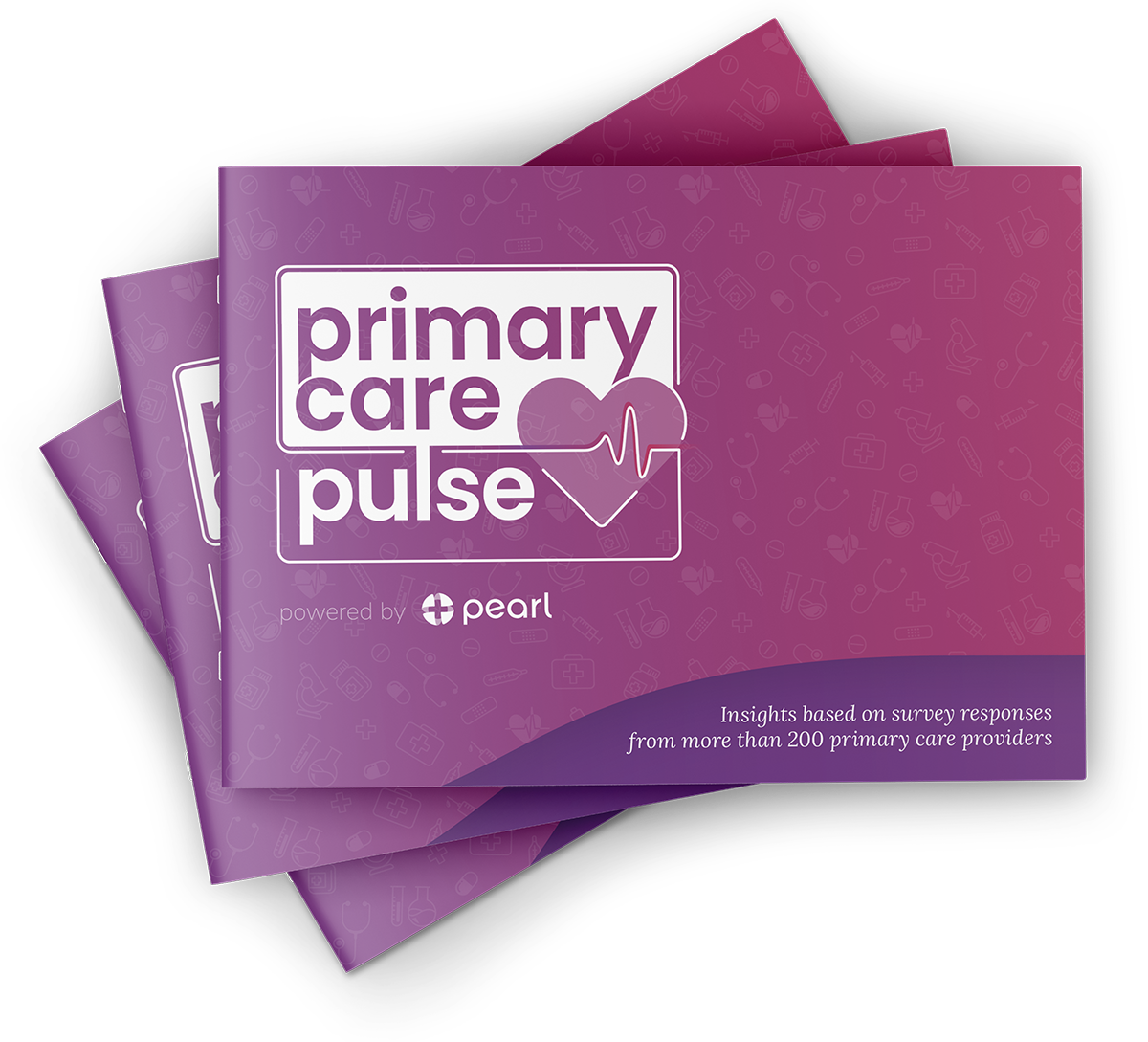There’s no avoiding a simple fact: primary care physicians (PCPs) are struggling. The majority — whether in small group practices or large multispecialty organizations — feel overworked, under-resourced, and inadequately rewarded in their efforts to provide quality care.
While PCP burnout has been a growing concern for years, its intensity increased sharply throughout the COVID-19 pandemic and it remains a persistent issue. 60% of PCPs report feeling burnout today.1 Fewer than half of primary care residents would recommend medicine as a career to others.2 Our primary care physician shortage is expected to reach between 18,000 and 48,000 by 2034.3
The statistics are clear. The more fundamental questions are 1) why are PCPs experiencing such intense levels of burnout, and 2) what could help?
Taking the Pulse
Pearl’s 2023 Primary Care Pulse Report seeks to answer these questions. Based on survey responses from more than 200 physicians, follow-up interviews, and secondary research, we identified a variety of factors that contribute to burnout, with two key challenges consistently coming up.

#1 Financial Pressure and Misaligned Incentives
Fee-for-service medicine isn’t working for many PCPs. When patient visits are time-compressed and focused on ticking off boxes to ensure every dollar of reimbursement can be claimed to keep the lights on, how can PCPs afford to slow down and provide comprehensive care? They cannot, which is why, in a primarily fee-for-service world, only 3 in 10 PCPs we surveyed believe their pay allows them to provide holistic care.4

#2 The 27-Hour Day
A recent study published in the Journal of General Internal Medicine concluded that following recommended primary care guidelines would require nearly 27 hours per day.5 The implication? Without a better way to help PCPs focus on the patients most likely to need care and a payment model tied to patient outcomes rather than the volume of services delivered, burnout will continue to worsen and patient outcomes will suffer.
The Promise of Value-Based Care
While the challenges above paint a bleak picture, many of our survey respondents see a brighter future ahead. One where primary care moves beyond the limitations of fee-for-service, instead embracing value-based payment models.
PCPs who have already made the shift to value report enjoying substantial benefits, including financial rewards tied to improving patient outcomes and lowering healthcare costs, flexibility to deliver more holistic care, and lower levels of burnout.6
Ready to learn more about the challenges and opportunities facing PCPs today? Download the full Primary Care Pulse Report below.
- Medscape, “US Physician Burnout & Depression Report,” 2023.
- The Physicians Foundation, “2023 Survey of America’s Current and Future Physicians,” September 2023.
- Association of American Medical Colleges, “The Complexities of Physician Supply and Demand: Projections From 2019 to 2034,” June 2021.
- Pearl Health, “2023 Primary Care Pulse Report,” 2023.
- Library of Medicine, “Revisiting the Time Needed to Provide Adult Primary Care,” July 2022.
- American Academy of Family Physicians, “Evaluating Value Based Payment in Reducing Administrative Burden,” October 2023.






